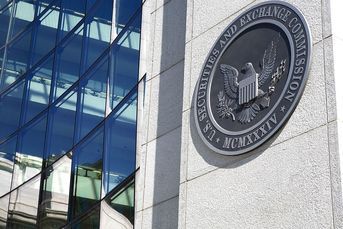Nasdaq’s stock deal confounds members
The Nasdaq Stock Market Inc. should wrap up its second private-placement offering this month, but the deal is…
The Nasdaq Stock Market Inc. should wrap up its second private-placement offering this month, but the deal is still shrouded by smoke, if not mirrors.
Many small and midsize broker-dealers who bought the stock say they don’t have a clue about what the Nasdaq might be worth.
To make matters worse, top executives of the National Association of Securities Dealers have refused to discuss the deal publicly or even with its new stockholders.
“I’ve never valued an exchange. I don’t know how you’re supposed to value this thing,” says Jody Eisenman, chief executive of Perrin Holden & Davenport Capital Corp., a New York broker-dealer. “I’m in the dark.”
Sweet deal?
On paper at least, the Nasdaq has all the earmarks of a growth company.
Revenues shot up 21.7% between 1997 and 1999, according to its latest private-placement memorandum, which was obtained by InvestmentNews.
Earnings also jumped by 43% to $1.26 per share during the first nine months of last year, according to the prospectus.
In the first offering, begun in March and completed in June, the Nasdaq was selling shares for $11. With earnings of 86 cents a share in 1999, that put its price-earnings ratio at close to 13.
In the second tranche, which began in November, the company has priced its shares at $13, pushing the p/e ratio up to 15.
That looks good when compared with much of Wall Street. Companies that make up the Standard & Poor’s 500 stock index, for example, had an average p/e of around 25 at the end of last year.
Given the stock market’s recent volatility, however, experts say it is unlikely that the Nasdaq will go public anytime soon.
Indeed, in recent weeks Nasdaq and NASD chief Frank Zarb has backed away from previous statements about a public offering.
Upon being named chief executive of the Nasdaq last month, Hardwick Simmons told reporters that moving the stock market toward a public offering would be one of his priorities this year.
But Mr. Zarb quickly stepped in and corrected Mr. Simmons, saying that a decision had not been reached and would be left up to the Nasdaq’s board of directors.
Buying in
Broker-dealers surveyed by InvestmentNews expressed concern about such confusion, and some worried that an organization once owned by more than 5,000 member firms could end up in the hands of 30 or 40 big players.
Even so, that didn’t stop Mr. Eisenman and other small and midsize broker-dealers from buying into the two offerings.
He says his company bought 1,000 shares in the first tranche at $11 per share, and 1,500 warrants, priced at $14 per share, in the second.
The timing of the second deal may have frustrated efforts by smaller firms to buy stock, broker-dealer executives say.
The Nasdaq rolled out the second offering amid a sharp decline in the overall market. The situation prevented smaller broker-dealers from freeing up cash to invest, executives say.
The first offering was made last March at a time when the market was peaking. It raised $334 million and put 40% of the Nasdaq in the hands of investors other than the NASD, according to Nasdaq.
The Nasdaq took in $260 million, while the NASD raised $74 million.
Even though the NASD has more than 5,500 broker-dealer members, about half missed out, with 2,764 buying the first round.
A number of broker-dealers want to find out who now owns the market they used to own. They particularly want to know the stake of the wirehouses and the almost 40 other investors that are leading companies on the Nasdaq.
“When all’s said and done, 30 firms will control the Nasdaq,” laments Joe Mays, president of Securities Consulting Group Inc. in New York, a consultant to more than 60 securities firms.
But the Nasdaq’s not telling.
Because it is a private placement, the Nasdaq is not required to file a list of owners with the SEC, according to a commission official.
Scott Peterson, a Nasdaq spokesman, would not comment on the level of participation of small and midsize broker-dealers in the latest offering.
Nor would he comment on the specific firms that bought shares in the first offering or whether the market had moved closer to an IPO.
Mr. Peterson added that the Nasdaq is in the middle of wrapping up the second placement and should be finished by the end of the month.
By then, however, the Nasdaq might have some explaining to do.
Last month, The Wall Street Journal reported that the SEC was about to reveal in a report that investors still get worse prices when they trade on the Nasdaq compared to the New York Stock Exchange.
The study could be released this week.
The Nasdaq also faces substantial competition. Its prospectus notes that the Big Board has said it might buy or build its own electronic trading network for the rival market’s stocks. And seven electronic communications networks, known as ECNs, have entered into an agreement to share quotes for after-hours trading.
That might boost the ECNs’ liquidity and cut into the Nasdaq’s ability to compete in after-hours trading, according to the prospectus.
Learn more about reprints and licensing for this article.








